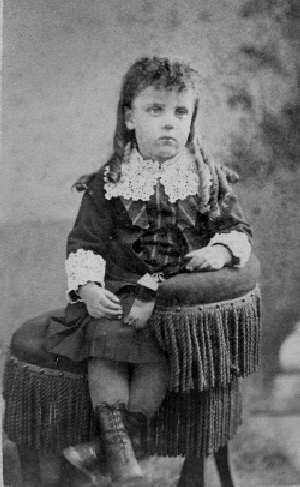
Figure 1.--This English boy had his portrait taken in Lynn, probably in the 1880s. The French called ringlet curls, English curls, but actually this style was more common in America. |

Hair styles are of course subject to chronolgical variations as styles change. Not infrequaently, styles seen as next to scandalous in one era are the height of fashion in another. The major factor changing over time has been hair length, but stylistic variations also change. We note mostly short hair in the 19th century, sometimes ovr the ears in the mid-19th century. Some younger boys, especially from affluent families had long hair for beginning school at about age 8 years. We note both curled and uncurled styles. Hair styles conginued to be mostly short in the 20th century. Short-backs-and-sides were common in the first hald of the 20th century. We don't notice the cropped haie styles that were common in Germany. Hair began to worn longer in the late 60s and we note boys with long hair in the 70s. Here conflict with parents and schools prevented mny boys from wearibng their hair as long as they wanted. Hair styles became somnewhat shorter and more varies in the 80s. We note cropped hair skin-head stules in the 90s, but this style was less common by the end of the century. Hair styles in the early 21st century were notable for their diversiy.
The 18th century is notable for elaborate hairdos. This was especially the case for women. The styles were strongly influenced by the French nobility. Men wire wigs, often powdered wigs. Boys did not wear wigs, except perhaps older boys from very wealthy family. We note several paintings showing boys wearing pigtails, often tied with a small ribbon. There was a dramatic change with hair styles with the adventb of the French Revolution. The French nobility and well gto stopped wearing elaborate hairdos and wigs. To do so only attracted the attention of the Committee of Public Safty. The change soon crossed the Channel. Biys were less affected, but we stop seeing boys with pigtails.
|
We have just begun to assess English 19th century hair styles. We note medium-length hair in the early-19th century, however, our information is very limited at this time. Abnd we are not entirely sure about the early-19th century. Thanks to photography we know much more about mid-century hair styles, especially with the appearance of CDVs (1860s). We note somewhat longer styles at mid-century. It was quite common go have hair down to the ears or even over the ears. Younger boys might have longer styles, even riglet curls. We suspect social-class factors were involved here. Some boys, especially from affluent families, had long hair until beginning school at about about age 6 years. Sone school-age boys had longer hair if educated at home, but their hair was cut if not sooner when boys went off the boarding school at about age 8 years. School styles seem basically the same as the popular styles at the time. We do not notice schools insisting on especially short hair. We note both curled and uncurled styles. This was not as common as in America, but more common than on the contient where ringlets began ti be called 'English curls'. After the 1860s, hair styles gradually became shorter, especially by the 1880s. We see mostly short hair by the 1890s, although we continue to see younger boys from well-to-do families waring long hair, including ringlet curls.
Hair styles conginued to be mostly short in the 20th century. Short-backs-and-sides were common in the first hald of the 20th century. We don't notice the cropped hair styles that were common in Germany.
Brylcreme had a surge of popularity in the 50s, but mostly any boy using hair products would have been the butt of ridicule by their peers. The 60s saw the teddy boy quiff popular amongst teenagers who could get it past their parents along with the 'brothel creeper' shoes, jackets and drainpipe trousers. The punk era in the late 70s is obviously a real extreme. Hair began to worn longer in the late 60s and we note boys with long hair in the 70s. It was the mid-70s when long hair was as popular except with those into heavy metal music. Here conflict with parents and schools prevented mny boys from wearibng their hair as long as they wanted. Hair styles became somnewhat shorter and more varies in the 80s. We note cropped hair skin-head styles in the 90s, but this style was less common by the end of the century. During the 90s there was a brief period where boys had longer hair and center partings, sometimes called curtains because of the effect it gave. Undercuts (shorter hair at lower levels of the head than on the top ) were popular in the 1990s as was cutting patterns and letters into the hair, the latter especially with black boys. From the late 90s to present long hair for boys has been popular with many boys; notably those associated with skating (skateboards). From the 90s and turn of the century hair gels and similar styling products became and remain popular with boys and spiked and quiffed styles became very popular. From the beginning of the 90s or maybe a little earlier boys were targetted by manufactures and became far more conscious about personal hygiene, hair care etc.
Hair styles in the early 21st century were notable for their diversiy.
Navigate the Boys' Historical Clothing hair style pages:
[Return to the Main English hair page]
[Return to the Main national part page]
[Bangs]
[Ringlet curls]
[Hair bows]
[Curls]
[Caps]
[Collar bows]
Navigate the Boys' Historical Clothing Web Site:
[Introduction]
[Activities]
[Biographies]
[Chronology]
[Clothing styles]
[Countries]
[Topics]
[Bibliographies]
[Contributions]
[FAQs]
[Glossaries]
[Images]
[Links]
[Registration]
[Tools]
[Boys' Clothing Home]
